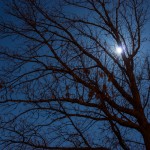Once upon a time a king was granted a boon by the god of creation that he would not be killed during day or night; inside the home or outside, not on earth or in the sky; neither by a man nor an animal, nor by a weapon or specialized knowledge. Consequently, the king grew arrogant and attacked the heavens and the earth. He demanded that people stop worshipping gods and start worshipping him. The balance in the world was lost.
However, the king’s own son continued to worship the Supreme God. This angered the king and he attempted to kill his son several times. When all his attempts to kill his son failed the king ordered his son to sit on a pyre in the lap of Holika—the king’s sister, who could not die because she had a boon preventing her from being burned by fire. The young prince readily accepted his father’s orders, and prayed to the Supreme God to keep him safe. When the fire started, everyone watched in amazement as Holika burnt to death, while the prince survived unharmed. The salvation of the prince and burning of Holika is celebrated as Holi.
Eventually, the Supreme God comes upon the powerful and tyrannical king at twilight (when it’s neither day nor night) on the threshold of a courtyard (neither indoors nor out), and puts the king on his lap (neither earth nor space). Using his nails (neither animate nor inanimate) as weapons, he disembowels and kills the king.
Holi is a festival of restoring the balance, of destroying evil, and to usher in spring—the season of love. I leave you with three images which to me symbolizes the spirit of Holi—day that symbolizes power, night that symbolizes creativity, and twilight that maintains the balance.






